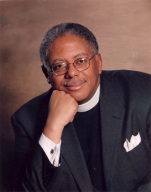African American Heritage Month
 February marks the beginning of Black History Month, a federally recognized, nation-wide celebration that provides the opportunity for all Americans to reflect on the significant roles that African Americans have played in the shaping of U.S. history. The Episcopal Church has had many notable African American leaders.
February marks the beginning of Black History Month, a federally recognized, nation-wide celebration that provides the opportunity for all Americans to reflect on the significant roles that African Americans have played in the shaping of U.S. history. The Episcopal Church has had many notable African American leaders.
Carter G. Woodson (1875-1950), a pioneer in the study of African American history, is given much of the credit for Black History Month. The son of former slaves, Woodson spent his childhood working in coalmines and quarries, but received a masters degree in history from the University of Chicago and earned a doctorate from Harvard.
Concerned that history textbooks largely ignored the contributions of America’s black citizens, Woodson established the Association for the Study of Negro Life and History and founded that group’s publication, the Journal of Negro History. In 1926, he established Negro History Week. In 1976, Negro History Week became Black History Month or African American Heritage Month.
Woodson chose the second week of February because it marks the birthdays of Frederick Douglass (February 14), an escaped slave who became one of the foremost black abolitionists and civil rights leaders in the nation and President Abraham Lincoln (February 12), who signed the Emancipation Proclamation, which abolished slavery in America’s confederate states. Because of his work, Woodson has been called the “Father of Black History.”
African Americans in the Episcopal Church
Two early African-American figures in the Episcopal Church were Absalom Jones and Richard Allen. Jones was born a slave in Delaware in 1746. He taught himself to read using the New Testament. In 1784, he was able to buy his freedom. Allen, too, was born a slave in Philadelphia and was able to purchase his freedom. In 1787, Jones and Allen founded the Free African Religious Society. Both served as lay ministers for the Black membership at St. George’s Methodist Episcopal Church in Philadelphia. Under their leadership, the Black membership increased significantly, which threatened white members. In 1792, an alarmed vestry decided to segregate the Black members into an upstairs gallery. Accounts vary, but it is remembered that Jones and Allen were praying in the front of the sanctuary when they were forcibly removed by the ushers. The entire Black membership walked out of the church in protest and began construction of the African Church of Philadelphia, which was completed two years later.
This church applied for membership in the Episcopal Diocese of Pennsylvania, with the conditions that they be received as an organized body, have control over their own affairs and that Absalom Jones be licensed as a lay reader or ordained a minister. Later that year they were admitted to the diocese as St. Thomas African Episcopal Church. Absalom Jones was ordained a deacon in 1795 and a priest in 1802. Jones preached a message of liberation, that God was the Father who always acted on “behalf of the oppressed and distressed,” and he denounced slavery. During its first year, the church grew to 500 members.
Absalom Jones is still commemorated annually as the first Black Episcopal priest (in fact he was the first Black minister of any denomination ordained in the United States).
